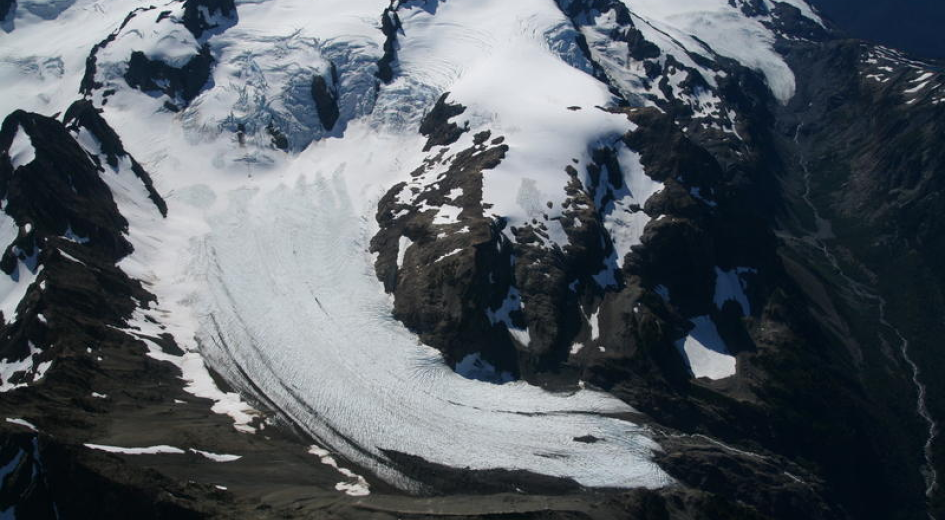Andrew G. Fountain, professor of geology and geography at Portland State University - who headed a research group on the subject - feels that the glaciers on the Olympic Peninsula in Washington State will have disappeared substantially by 2070.
 Blue Glacier in 2007. Image Credit: John Scurlock.
Blue Glacier in 2007. Image Credit: John Scurlock.
Even though few glaciers will possibly remain — albeit as small shells of their former selves.
The study performed by Fountain was recently reported in the Journal of Geophysical Research, Earth Surface. Since 1900, the area has last around half of its glacier region. Similarly, since 1980, 16 perennial snowfields and 35 glaciers have disappeared.
There’s little we can do to prevent the disappearance of these glaciers. We’re on this global warming train right now. Even if we're super good citizens and stop adding carbon dioxide in the atmosphere immediately, it will still be 100 years or so before the climate responds.
Andrew G. Fountain, Professor, Geology and Geography, Portland State University
Although avoiding glacier melt at the hand of global warming is not forthcoming, guaranteeing things do not worsen is a crucial goal, stated Fountain.
“This is yet another tangible call out for us to take climate change seriously and take actions to minimize our climate impact,” added Fountain.
Dan Cayan, a research meteorologist at the University of California’s Scripps Institution of Oceanography, San Diego, stated that this study reveals that glaciers are a “hydroclimate finger on the pulse of Pacific decadal climate.”
The extensive, long-term loss of glacial mass discovered in the Olympic Peninsula is a powerful indication of a warming global climate, added Cayan.
Cayan stated, “This is a clear and compelling signal of changes that are rolling out across many North American landscapes. It is regrettable that the Olympic glaciers are very likely to melt away as climate warming over the coming decades runs its course.”
The disappearance of glaciers will activate a chain of impacts, starting with lessening alpine streams and species similar to huge bull trout that have adapted to be able to survive in the cold water streams.
Once you lose your seasonal snow, the only source of water in these alpine areas is glacier melt. And without the glaciers, you're not going to have that melt contributing to the stream flow, and therefore impacting the ecology in alpine areas. That's a big deal with disastrous fallout.
Andrew G. Fountain, Professor, Geology and Geography, Portland State University
U.S. Geological Survey data displays a similar decrease of glacier ice in the North Cascades of Washington, beyond inland in Glacier National Park, Montana, and further north in Alaska, as per the USGS Research Physical Scientist Caitlyn Florentine.
This assessment of glaciers in the Olympic Mountains underscores two key elements of glacier vulnerability. The first is warming summer temperatures, which affect the persistence of glacier ice throughout the summer melt season.
Andrew G. Fountain, Professor, Geology and Geography, Portland State University
Fountain added, “The second, less obvious, is warming winter temperatures, which affect the replenishment of glacier ice during the winter snow accumulation season. This double whammy has downstream implications for glacier-adapted ecosystems in the U.S. Pacific Northwest.”
The Olympic glaciers are especially vulnerable due to their lower elevation compared to glaciers present somewhere else at greater elevations where temperatures are considerably cooler like the Cascade Mountains of Washington and Oregon.
Fountain stated, “As the temperatures warm, not only will the glaciers melt more in summer, which you'd expect, but in the wintertime, it changes the phase of the precipitation from snow to rain. So the glaciers get less nourished in the winter, more melt in the summer, and then they just fall off the map.”
Now that this research is complete, Fountain will now begin to focus on the entire Western U.S. to design an extensive view of glaciers in Washington, California, Oregon, Montana, Wyoming and Colorado.
Journal Reference:
Fountain, A. G., et al. (2022) Glaciers of the Olympic Mountains, Washington—The Past and Future 100 Years. JGR Earth Surface. doi.org/10.1029/2022JF006670.